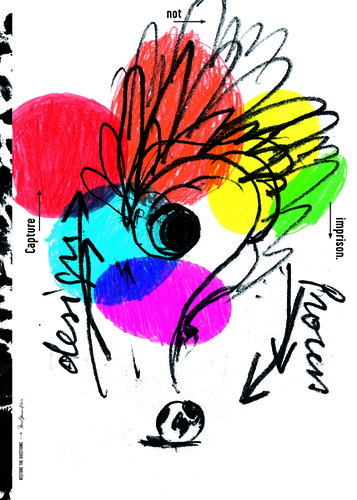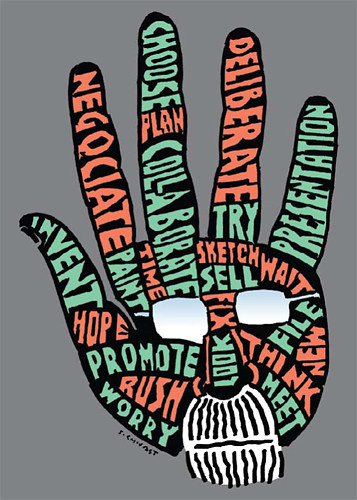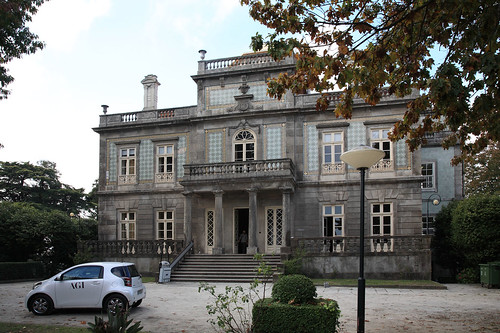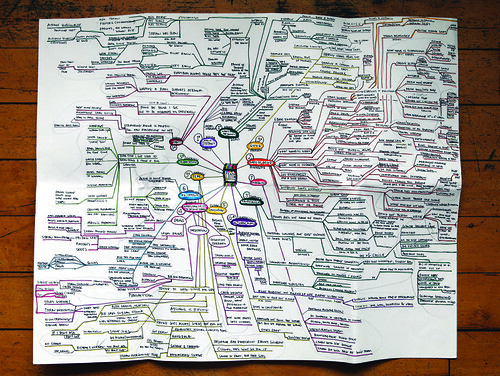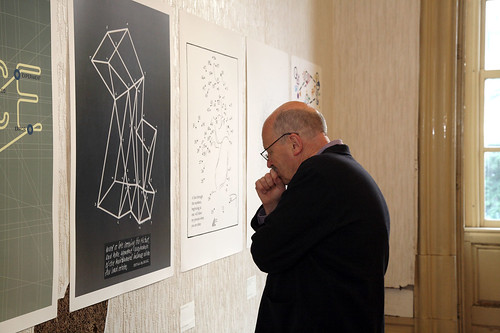Monday, 11:08am
25 October 2010
Maps and legends
Charting the working processes of early 21st-century designers
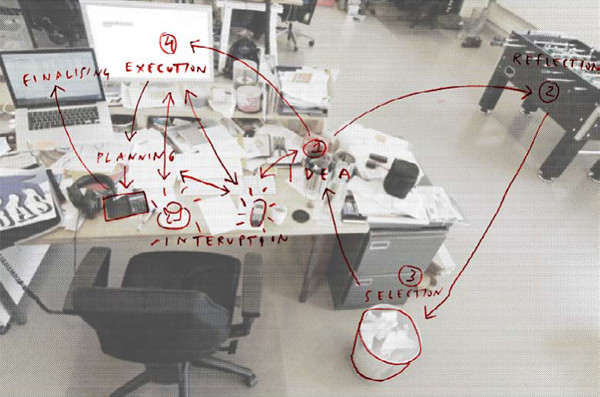
As a lasting souvenir of the first AGI Open conference, which took place in Porto last week, organizers Lizá Ramalho and Artur Rebelo edited and designed a book titled — like the conference itself — ‘Process Is the Project’, writes Jan Middendorp.
The book is a catalogue of the exhibition ‘Mapping the Process’ (co-curated by architect André Tavares), which is being held at Porto’s charming Palacete Pinto Leite, a former music school, until 10 November.
Top: Peter Biľak’s contribution to the AGI Open conference. See our Reputations interview with Biľak from Eye 75.
Below: Pierre Bernard. Rick Poynor interviewed Bernard way back in Eye 3, read it here.
To a certain extent, the book is the exhibition, as it reproduces the complete series of almost a hundred works by AGI members that were specially made for the show. As AGI President Paula Scher explains in her introduction to the book, it is customary for each annual AGI conference to host a graphic project to which members contribute; however, this year’s exhibition is extraordinary. Ramalho and Rebelo challenged their colleagues to go beyond the usual tribute to the location of the conference. They asked the membership to create ‘a map of their working process’. Which is like, as Scher notes (and the three curators admit), asking for ‘the impossible’.
Above: Palm reading Seymour Chwast’s creative process. See ‘Divine noir’ on the Eye blog for a look at Chwast’s surreal take on Dante.
Below: Henning Wagenbreth’s Illustration Plant.
While poster projects on a given theme often have a perfunctory feel about them, many of the works in this collection emanate the kind of fun, passion, confusion and craziness which the organisers doubtlessly hoped for. The impossible has seldom been dealt with in a more lucid and witty way. What makes the exhibition and companion book special is, of course, the amazing quality and range of the people involved.
While the AGI was once a gathering of modernistically inclined white European men, its membership now includes people from six continents and encompasses virtually all the current views on graphic design, typography and illustration; ages range from, roughly, late twenties to nineties. All of this is reflected in this collection of mental maps (and schemes, collages, cartoons) which is astonishing and at times puzzling in its variety of answers to the question: how do you do it?
That designers, many of whom are highly respected and even ‘famous’, agree to draw a map of their process in the first place, is quite amazing. For some it may be like giving away manufacturing secrets; for others, baring their professional (and personal) souls. Some have synthesized the painful aspects of compromise in a single strong and witty image, like Alain Le Quernec’s ‘Double Target’ (showing a clumsy drawing of a target that is but a shadow of the powerful graphic image it tries to approximate, above).
David Gentleman represented the tortuous creation process by a sensitive hand-painted path; Uwe Loesch sampled Minard’s famous graph of the decimation of Napoleon’s army in Russia as a sarcastic comment on the lost battle with the client. Several designers, including Stefan Sagmeister, made no attempt to synthesize the steps from start to finish but displayed each hurdle in its mind-bending, heart-breaking complexity (below). Tony Brook summarized the whole thing in three words, set sideways: ‘Think, Make, Next’, while Seymour Chwast mused: ‘Process? What Process? The working method of a designer does not look like a monopoly board. It looks more like a salad.’
An introspective project like this will always have an element of narcissism and complacency. But ‘Mapping the Process’ and its catalogue contain enough wit, insight and sheer virtuosity to complement that and reach beyond the strictly personal. Without wanting to sound pompous, I think that in a few years’ or decades’ time, the catalogue will offer invaluable insight into what made four generations of designers tick in the early 21st century.
Copies of Process Is the Project (€25) are available from Dados Favoritos, a not-f0r-profit cultural association set up by Lizá Ramalho and Artur Rebelo.
Eye magazine is available from all good design bookshops and at the online Eye shop, where you can order subscriptions, single issues and back issues. The Autumn issue, Eye 77, which includes a Reputations interview with Paula Scher, is on its way to subscribers right now. For regular updates, please sign up for the editor’s newsletter.

